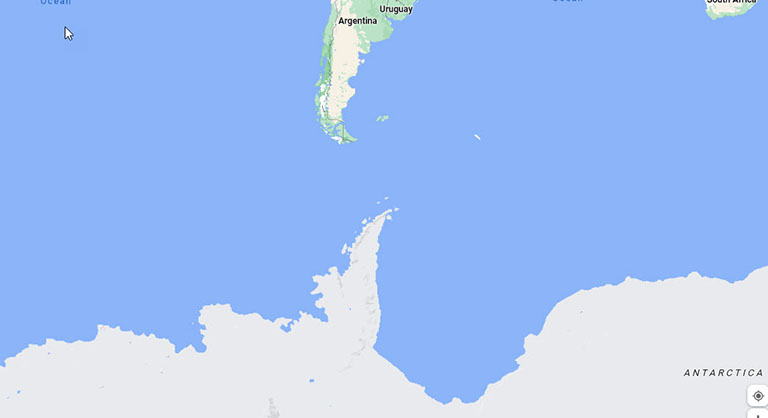|
Our Ship - MARINA
|
Ports
|
Santiago de Chile
|
Puerto Montt, Chile
|
Puerto Chacabuco, Chile
|
Laguna San Rafael, Chile
|
Chilean Fjords
|
Punta Arenas, Chile
|
Ushuaia, Argentina
|
Drake Passage
|
Antarctica
|
Port Stanley, Falkland Islands
|
Puerto Madryn, Argentina
|
Punta Del Este, Uruguay
|
Montevideo, Uruguay
|
Buenos Aires, Argentina
|
Points of Interest
|
Iguazu Falls
|
Resources
|
Books
|
|
|
|
|
|
|
The Drake Passage is the body of water between South America's Cape Horn, Chile, Argentina and the South Shetland Islands of Antarctica. It connects the southwestern part of the Atlantic Ocean with the southeastern part of the Pacific Ocean and extends into the Southern Ocean. The passage is named after the 16th-century English explorer and privateer Sir Francis Drake.
The Drake Passage is considered one of the most treacherous voyages for ships to make. Because the far-southern seas are the only waters that flow uninterrupted around the globe, they gather enormous power, with waves building over as much as thirteen thousand miles, accumulating strength as they roll through one ocean after another. When they arrive, at last, at Cape Horn, they are squeezed into a narrowing corridor between the southernmost American headland and the northernmost part of the Antarctic Peninsula. This funnel, known as the Drake Passage, makes the torrent even more pulverizing. The currents are not only the longest-running on earth but also the strongest, transporting more than four billion cubic feet of water per second, more than six hundred times the discharge of the Amazon River. And then there are the winds. Consistently whipping eastward from the Pacific, where no lands obstruct them, they frequently accelerate to hurricane force. Currents at its latitude meet no resistance from any landmass, and waves top 40 feet (12 m), hence its reputation as "the most powerful convergence of seas". This is exacerbated by the fact that the Drake Passage shallows to 300 feet when the rest of the depths for the currents is thirteen hundred feet. Sailors refer to the higher latitudes as the Roaring Forties, the Furious Fifties and the Screaming Sixties. Cape Horn is at about 55° S, and the South Shetland Islands are at about 62° S.
As the Drake Passage is the narrowest passage (choke point) around Antarctica, its existence and shape strongly influence the circulation of water around Antarctica and the global oceanic circulation, as well as the global climate.
The opening had a major effect on the global oceans due to deep currents like the Antarctic Circumpolar Current (ACC). This opening could have been a primary cause of changes in global circulation and climate, as well as the rapid expansion of Antarctic ice sheets, because, as Antarctica was encircled by ocean currents, it was cut off from receiving heat from warmer regions
The 800-kilometre-wide (500 mi) passage between Cape Horn and Livingston Island is the shortest crossing from Antarctica to another landmass. The boundary between the Atlantic and Pacific Oceans is sometimes taken to be a line drawn from Cape Horn to Snow Island (130 kilometres (81 mi) north of mainland Antarctica), though the International Hydrographic Organization defines it as the meridian that passes through Cape Horn: 67° 16 W. Both lines lie within the Drake Passage.
The other two passages around the southern extremity of South America — the Strait of Magellan and the Beagle Channel — have frequent narrows, leaving little maneuvering room for a ship, as well as unpredictable winds and tidal currents. Most sailing ships thus prefer the Drake Passage, which is open water for hundreds of miles.
| |
| |
| |
|
